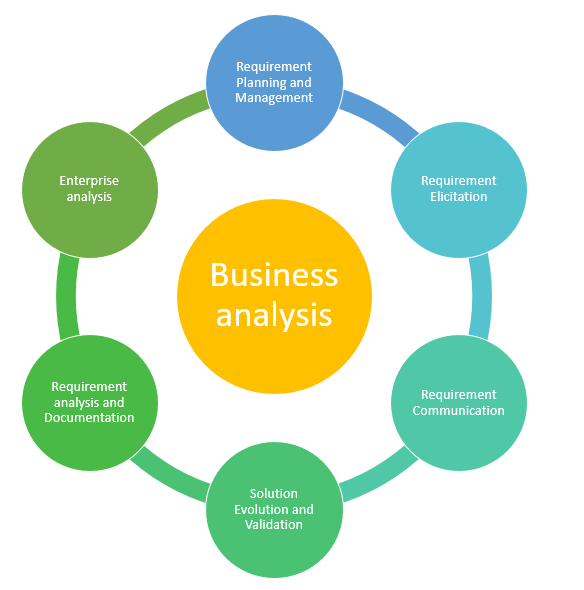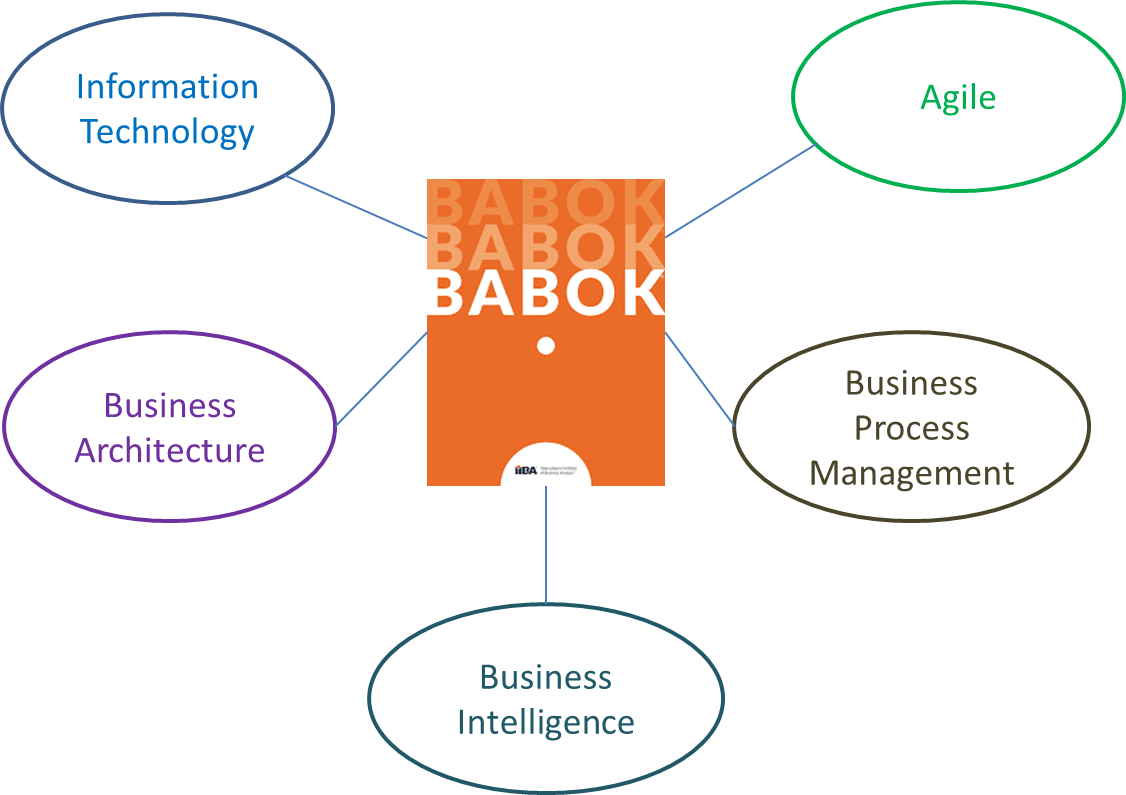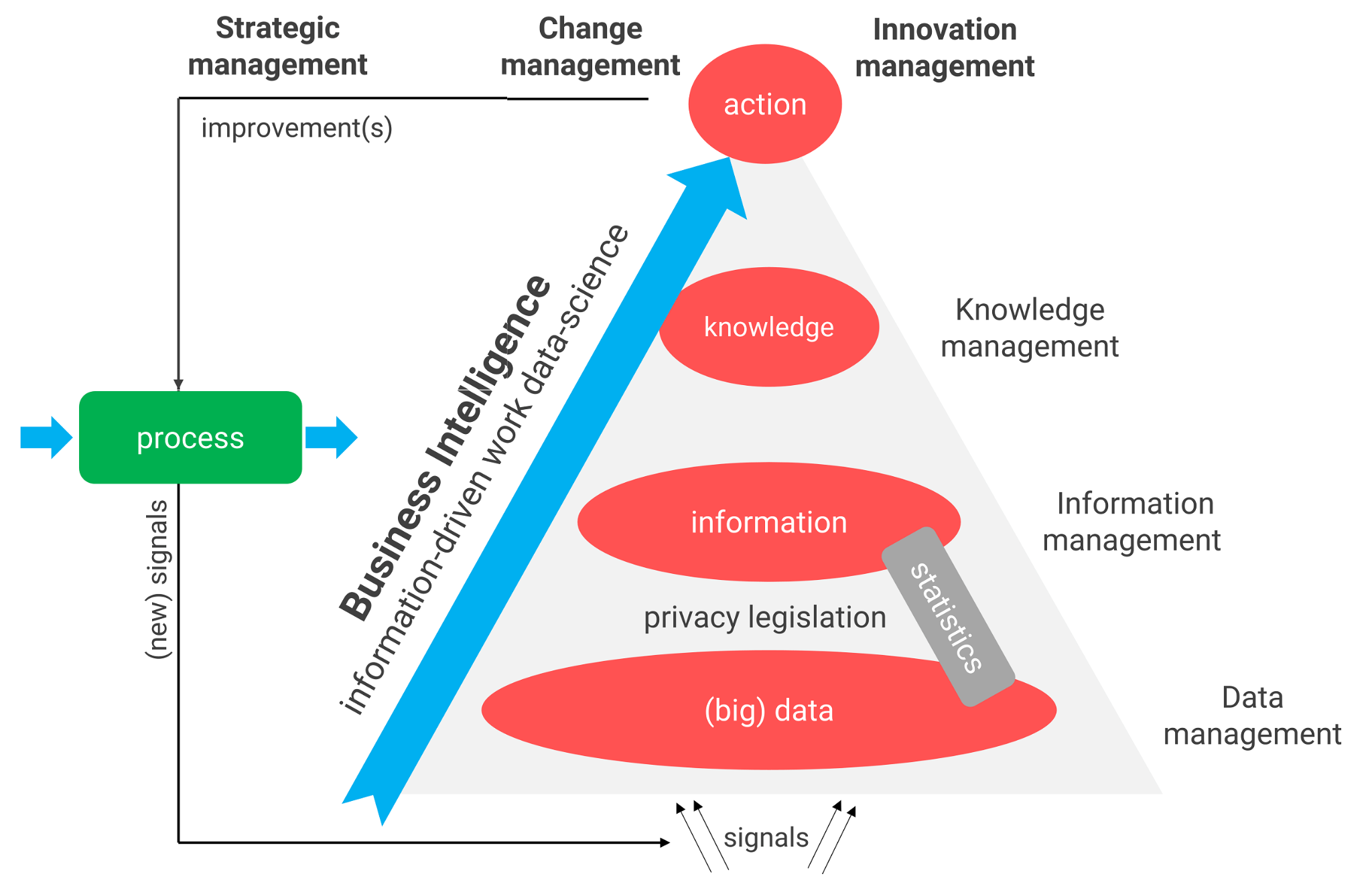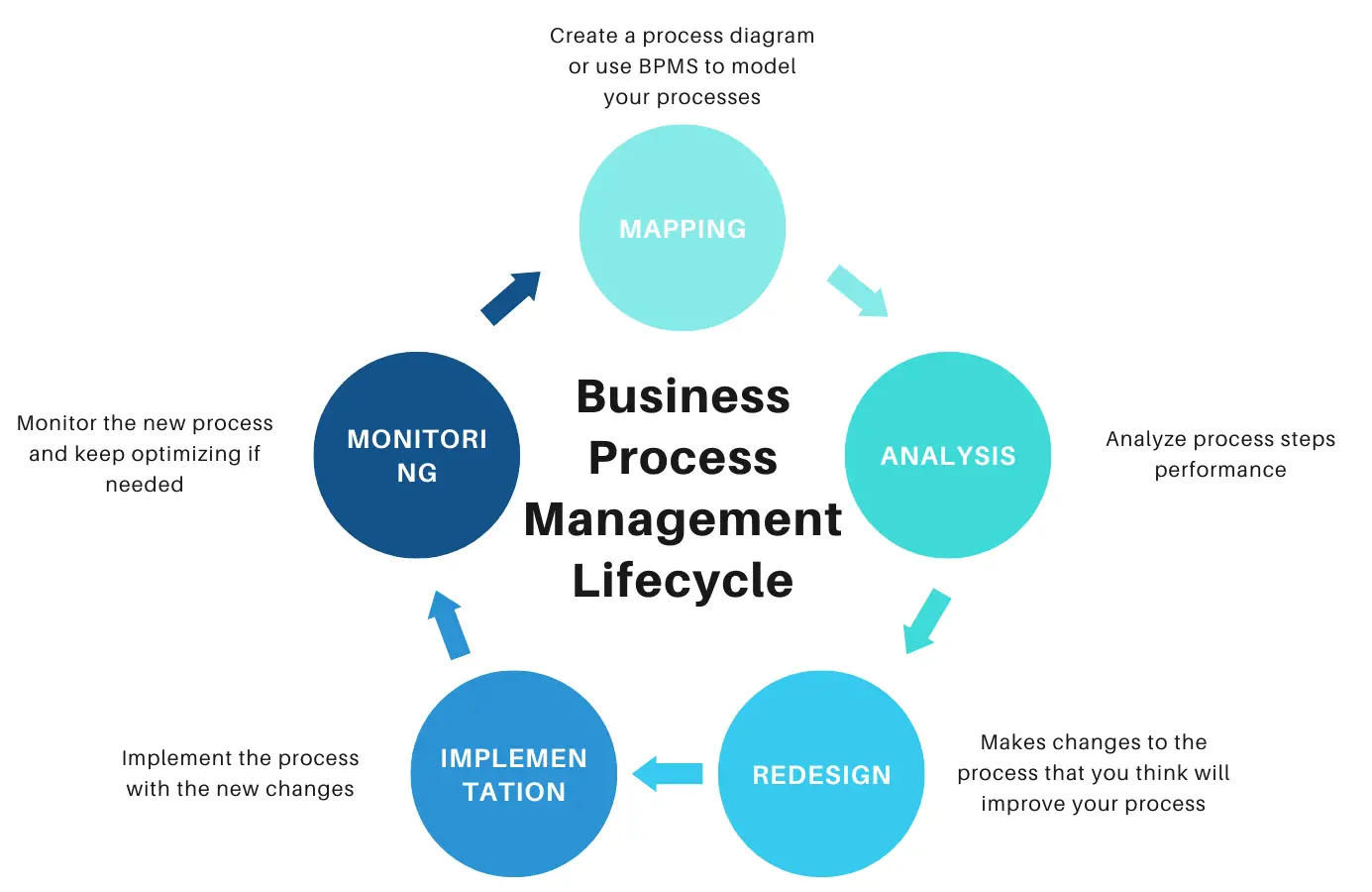Business Analysis demands in-depth knowledge, expertise, and flexibility. It covers various disciplines and scenarios and offers tools that considerably improve business processes. BAs successfully combine them in their professional activities. Let’s explore five perspectives that help specialists working in this field carry out their tasks effectively.

What are Perspectives in Business Analysis?
Perspectives are like lenses through which BAs view initiatives to understand their objectives and apply the right methods to specific contexts. The BABOK® Guide describes five prominent ones that represent common approaches to Business Analysis: Agile, Business Intelligence, Information Technology, Business Architecture, and Business Process Management.
Experts often blend multiple perspectives to meet unique needs. For example, a technology initiative may realize it also requires business process changes. In turn, an Agile project may consider impacts on business architecture during a merger.
Unified by a common structure, these perspectives outline change scope, content, methodologies and techniques, competencies, and knowledge area impact.

Agile Perspective
Agile is extremely popular, especially in software development. It encourages constant collaboration and communication between self-organized, cross-functional teams and business stakeholders. Rather than extensive upfront planning, the goal is to quickly start discovering requirements and possible solutions. A team takes an iterative approach to development and delivers incremental pieces of a product to get feedback.
Within Agile, you need to be flexible and open to constant change throughout the project lifecycle. Requirements will evolve as understanding deepens. As a BA in an Agile environment, you'll be continuously assessing, adapting, and adjusting your work and deliverables. Your documentation and artifacts must be flexible enough to change and provide enough detail just in time to help the team work efficiently. You'll rely heavily on frequent conversations and whiteboarding over detailed documents.
You should think creatively, work transparently, and keep the end goal in mind. What’s more, you should fully embrace the values and principles of the Agile Manifesto, which emphasizes communication, collaboration, and a humanistic approach to product development. So, cultivate the following competencies:
- Communication skills: Analysts effectively convey the sponsor's vision and needs to the team. They influence alignment on priorities and facilitate collective decisions on solutions.
- Calmness and tolerance: Agile requires self-control under pressure and an open mindset when interacting with others.
- Flexibility and adaptability: Agile analysts provide support wherever and whenever needed.
- Managing change: BAs rapidly assess change impacts and determine what shifting requirements truly add business value. They re-prioritize work accordingly.
- Identifying business value: BAs understand how changes and features benefit the business vision. They make the case for valuable requirements.
- Continuous improvement: Analysts periodically review approaches to increase team productivity and refinement.

Business Intelligence Perspective
Another perspective that has gained recognition is Business Intelligence (BI). Experienced BAs use strategies, tools, technologies and skillsets to collect, organize, analyze, visualize, and extract meaningful insights from vast amounts of business data.
This is vitally important nowadays. Modern businesses handle exponentially increasing volumes of data, from customer transactions to internal operational metrics. But this raw data is useless if unprocessed. It becomes valuable only if BAs turn it into intelligent insights. Thanks to their work, organizations make smarter decisions and manage processes most efficiently.
The BA's job is to help management make more informed choices by spotting the most important signals within oceans of enterprise data. Experts must analyze and contextualize data in such a way that business leaders get valuable recommendations and discover meaningful narratives.
Within BI initiatives, BAs can provide even greater value through specialized competencies including:
- Business data knowledge: BAs must understand functional usage, terminology, rules, and complex structures of data assets to translate raw data into standardized formats.
- Process analysis: Analysts map processes utilizing BI systems and identify associated KPIs and metrics.
- Decision modeling: Experts apply statistics, profiling, aggregation, and other analysis techniques to support data-driven choices.
- BI architecture: BAs must show in-depth expertise in concepts like data warehousing, ETL, BI architecture patterns, logical/physical data models, and reporting tools.
- ETL best practices: Skills in historical data tracking, reference data management, and guiding proper extraction, transformation, and loading of data are indispensable.
- Solution delivery: BAs coordinate business information requirements with BI deliverables like dashboards, visualizations, and analytics.

Information Technology Perspective
When people refer to Information Technology (IT) in business, they usually think of technical items like computer hardware, software programs, servers, networks, and other related technologies. But this perspective has a much broader focus than just equipment and systems. It looks holistically at how any changes proposed to a company's core information systems and technologies will affect the overall business, including operations, capabilities, processes, and end users.
As a BA, you need to thoroughly analyze the downstream effects and ripple effect of any IT changes before implementation. A small code tweak could unexpectedly cause workflow disruptions. This perspective requires excelling at systems thinking to expect risks and recognize opportunities.
While technical skills like programming and database design can be beneficial, they are not required for BAs to thrive in IT environments. More important is understanding what details are needed in requirements to support feasible solutions within the organization's architectural constraints.
Key competencies of BAs within this perspective include:
- Solution framing: Specialists design full solution scopes and objectives at a broad level for technical teams to elaborate on.
- Requirements development: They capture critical details around features, data, interfaces, compliance, security, and technology constraints to enable development.
- Stakeholder engagement facilitation: BAs influence stakeholders and negotiate tradeoffs of cost vs. business outcomes with balanced IT solutions.
- Systems thinking: They analyze downstream impacts on processes, users, and interconnected systems.
- Technical communication: Analysts convey requirements effectively to technical teams and provide ongoing clarification.
- Architectural understanding: They grasp dependencies between existing and new technical components and limitations.
- Delivery coordination: BAs coordinate solutions throughout the development lifecycle within constraints.

Business Architecture Perspective
This perspective gives a holistic view of an organization as a whole. It captures and connects the business strategy, key capabilities, organizational relationships, data resources, business knowledge, and more.
BAs taking this perspective need to thoroughly understand the as-is and to-be enterprise architectures. They analyze how any proposed solutions will affect or need to align with the overall enterprise structure and business model. Any major changes proposed to the business, operating model, or organizational structure require rigorous analysis from the BA perspective to avoid blind spots.
Analysts using this perspective require specialized competencies including:
- Tolerating ambiguity: Given strategic uncertainty, BAs must operate effectively even with unknowns.
- Systems thinking: They analyze the broader enterprise context and interconnections.
- Conceptualization: BAs translate strategy and context into solution designs and components.
- Abstraction: Analysts focus on high-level representations and hide unnecessary details.
- Long-term orientation: Experts must plan across multi-year timeframes to realize long-term strategy while delivering short-term results.
- Scenario planning: They envision multiple potential outcomes and options for flexibility.

Business Process Management
This perspective spotlights Business Analysis performed to develop or improve organizational workflows.
BPM is a managerial discipline using technologies to focus on end-to-end processes delivering value. It views the organization through a process lens, seeking to optimize how work is performed across functions.
It brings value by introducing improvements to execute and regulate manual and automated processes. For organizations with a process-oriented mindset, it is an integral, ongoing management activity.
In BPM initiatives, BAs may examine a single process or all processes company-wide. The focus is on modifying them to achieve strategic goals.
The BPM lifecycle typically involves design, modeling, execution, monitoring, and optimization. This perspective enables organizations to introduce high-impact changes optimized for strategic alignment, efficiency, and stakeholder value.
BAs must challenge the status quo and encourage fresh thinking to optimize workflows. Their competencies include:
- Root cause analysis: These specialists must dig deeper to understand the source of process problems rather than just symptoms.
- Critical evaluation: They assess why processes operate in certain ways and identify improvement opportunities.
- Facilitating innovation: BAs make subject-matter experts reimagine more efficient and effective approaches.
- Connecting perspectives: They switch between internal and external process views to enhance understanding.
- Collaboration skills: Analysts constantly negotiate between groups and resolve conflicts.
- Change management: BAs facilitate process transformations impacting work habits.
- Stakeholder engagement: They communicate process changes across organizational levels.
- Mediation skills: Analysts identify and reconcile differing stakeholder opinions and needs into process designs.

Wrapping up
To provide maximum value, BAs need to blend these perspectives together depending on the project context and goals. For any given project, certain perspectives will be more relevant than others. Flexibly applying the right one at the right time is key to qualitative analysis.
Take time to understand the core focus, competencies, techniques, and tools of each perspective. Refer to guides like BABOK® regularly to deepen your knowledge. With practice, you'll learn when to zoom in versus zoom out and when to switch perspectives. Combining their strengths will make you a well-versed BA ready to tackle any challenge.
Author: Alina Vasylenko, Business Analyst, Andersen
Alina Vasylenko is Business Analysis expert at Andersen. Alina is passionate about new technologies and methods that can be implemented in the real life.